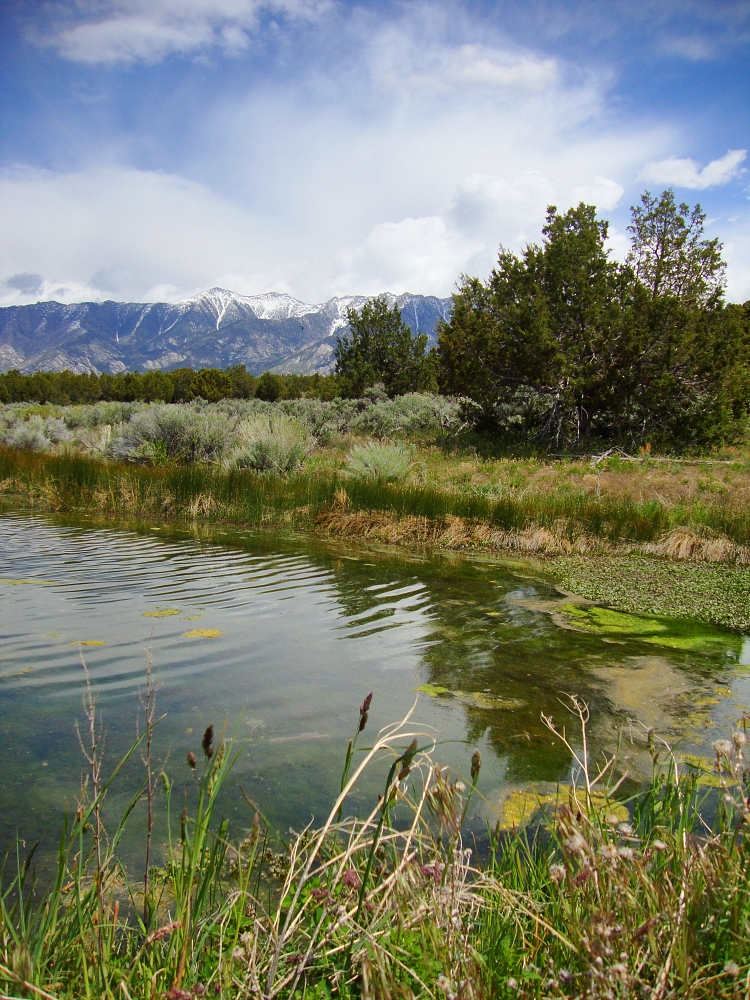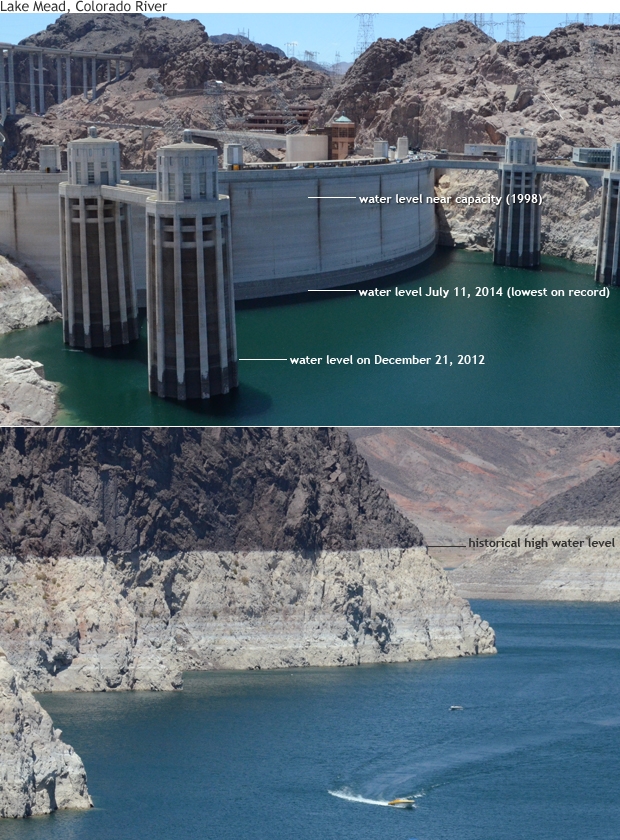By Deep Green Resistance Southwest Coalition
Whiskey’s for drinking, water’s for fighting over. —Mark Twain
More than any other area of North America, the Southwest faces water shortages just as demands for water increase. These colliding forces are inevitable products of industrial civilization. Deep Green Resistance chapters across the Southwest recognize the imminent catastrophe. We view the protection of ground and surface water, and the protection of indigenous peoples’ rights to their water and landbase, as critically important. We declare water preservation and justice as our primary focus.
Deep Green Resistance Southwest Coalition is a confederation of DGR action groups located in the southwest region of North America. While each group focuses on ecological and social justice issues specific to their region, as a Coalition we work together to reinforce each group’s efforts. Our members include:
Deep Green Resistance Colorado Plateau
Deep Green Resistance Colorado
Deep Green Resistance Great Basin
Deep Green Resistance Chaparral

Great Basin Spring, Goshute Reservation
The Increasingly Arid Southwest
The region is among the driest areas in the world. The southwest receives only 5-15 inches of rainfall a year [1] and nearly all climate models predict an increase in both aridity and flooding with global warming. [2] As increasing temperatures force the jet stream further north and more surface water is evaporated (notably in desert reservoirs like Lake Powell where an average 860,000 acre-feet of water—about 8 percent of the Colorado River’s annual flow—is lost every year), [3] overall precipitation is decreasing even as summer storms paradoxically become more intense. And there is no margin of safety from which civilization can draw—the Colorado River, for example, is already fully allocated; all the water is claimed. [4]
Agriculture is far and away the largest water consumer: California’s Imperial Irrigation District consumes 3.1 million acre-feet of Colorado River water every year, compared to the rest of Southern California, which gets only 1.3 million. [5] Large amounts of water are also used for oil and gas drilling—an estimated 100,000 gallons per fracked well [6]—and coal mining and burning.

LakeMeadWaterLevel
The water shortage is already wreaking havoc among wildlife. In California, the drought is partially implicated in the deaths of tens of thousands of native waterfowl. As water sources dry, birds congregate around remaining oases like fountains and irrigation ditches. In such close quarters, disease spreads quickly. Other victims of water scarcity in California include scores of thousands of bark beetle-killed trees—so much so that these results “herald a region in ecological transition.” [10] Unsurprisingly, 2015 is among the worst California fire seasons ever.This year, twelve western states declared drought emergencies. [7] On April 25, 2015, the largest US reservoir, Lake Mead, dropped to an historic low of 1,080 feet. That record surpassed the previous low set last August; Mead has never been lower since it was filled in the 1930s. [8] These conditions are unlikely to improve. In spring of 2015, snowpack in the Sierra Mountains measured at just 5 percent of normal. [9] Desperate Measures
These unprecedented changes are driving ever more desperate and costly projects, such as the Southern Nevada Water Authority’s planned multi-billion-dollar pipeline project in eastern Nevada’s and western Utah’s arid basin and range country. If completed, the project would pump billions of gallons of groundwater to Las Vegas, threatening the Goshute Indian reservation, the livelihoods of ranchers, many rare endemic species, and the land itself. [11]
A proposed California water pipeline may move as much as 7.5 million acre feet of northern California water south a year. It was just revised to include only a third of the originally planned habitat protection, re-allocating water from the Sacramento-San Joaquin Delta. Situated between California’s wetter north and its dry and populous south, the delta contains one of California’s largest remaining wetlands, home of green sturgeon, steelhead, and endangered Delta smelt. [12] More extreme are plans to siphon off some of Canada’s abundant water to California. [13] As drought and demand continue their increasing arcs, however, these desperate plans for massive water transfers become more acceptable to many.
The Only Sane Response
The government-industry axis takes water from the less powerful, regardless of any natural rights such groups may have. [14] This cannot continue, not even beyond the very short term. When the unstoppable force of increasing demand for water—continuing without limit—meets the immovable object of shrinking water supplies, environmental devastation and injustice swiftly follows.
DGR Southwest Coalition supports any protective or restorative action for ground and surface water, including the removal of dams and reservoirs by any means necessary. At the same time, we advocate for and support the dismantling of the systems (capitalism specifically and industrial civilization generally) as the only strategic way to safeguard the planet, and to keep it from degrading into a barren, lifeless husk. These are daunting tasks, no doubt, even if we limit our focus to the southwest; and yet, it’s a critical calling for all of us who care for life and justice.
We are reaching out to others who also view water protection and justice as values worth fighting for. For example, preserving instream flows (what’s left in a stream channel after other allocations) and groundwater protection—from fracking, from water mining, from surface contamination. We offer whatever expertise and resources we can muster, and all the passion we have, for our landbase. We’re ready to work with those who struggle with these problems; we’re also ready to take on whatever role is necessary in support of their fights.
This fight should be shared. Please contact us so we can network with you in pursuit of water, justice, and life.
swcoalition@deepgreenresistance.org [1] C. Daly, R.P. Neilson, and D.L. Phillips, 1994. “A statistical-topographic model for mapping climatological precipitation over mountainous terrain,” J. Appl. Meteor., 33(2), 140-158, as displayed in http://www.wrcc.dri.edu/pcpn/westus_precip.gif [2] Melanie Lenart, “Precipitation Changes,” Southwest Climate Change Network, September 18, 2008, http://www.southwestclimatechange.org/node/790#references [3] “Glen Canyon Dam,” Wikipedia,accessed December 10, 2012, http://en.wikipedia.org/wiki/Glen_Canyon_Dam. An acre-foot is about 325,853 US gallons.
[4] Brett Walton, “In Drying Colorado River Basin, Indian Tribes Are Water Dealmakers,” Circle of Blue, July 1, 2015, http://www.circleofblue.org/waternews/2015/world/in-drying-colorado-river-basin-indian-tribes-are-water-dealmakers/ [5] Tony Perry, “Despite drought, water flowing freely in Imperial Valley,” Los Angeles Times, April 13, 2015, http://www.latimes.com/local/california/la-me-drought-imperial-valley-20150412-story.html [6] Rory Carroll, “Fracking In California Used 70 Million Gallons Of Water In 2014,” Huffington Post, http://www.huffingtonpost.com/2015/04/02/fracking-california-water_n_6997324.html [7] Elizabeth Shogren, “Senate considers legislation to help the West store and conserve water,” High Country News, June 3, 2015, http://www.hcn.org/articles/california-farmers-fear-irrigation-water-will-go-to-salmon-instead [8] Sarah Tory, “Canadian water for California’s drought?” High Country News, April 28, 2015, http://www.hcn.org/articles/could-canadas-water-solve-californias-drought-1 [9] Ben Goldfarb, “Fowl play: California’s drought fingered in bird deaths,” High Country News, April 2, 2015, http://www.hcn.org/articles/fowl-play-californias-drought-fingered-in-bird-deaths [10] Keith Schneider, “California Fire Danger Mounts in Sierra Nevada Forests,” Circle of Blue, July 10, 2015, http://www.circleofblue.org/waternews/2015/world/as-california-drought-rebalances-sierra-forests-fire-danger-mounts/ [11] Stephen Dark, “Last Stand: Goshutes battle to save their sacred water,” Salt Lake City Weekly, May 9, 2012, http://www.cityweekly.net/utah/article-35-15894-last-stand.html?current_page=all [12] Kate Schimel, “Gov. Brown slashes Sacramento Delta environmental protection,” High Country News, May 7, 2015, http://www.hcn.org/articles/gov-jerry-brown-slashes-delta-environmental-protection [13] Sarah Tory, “Canadian water for California’s drought?” High Country News, April 28, 2015, http://www.hcn.org/articles/could-canadas-water-solve-californias-drought-1 [14] Ed Becenti, “Senate Bill 2109 Seeks to Extinguish Navajo and Hopi Water Rights,” Native News Network, April 4, 2012, http://www.nativenewsnetwork.com/senate-bill-2109-seeks-to-extinguish-navajo-and-hopi-water-rights.html